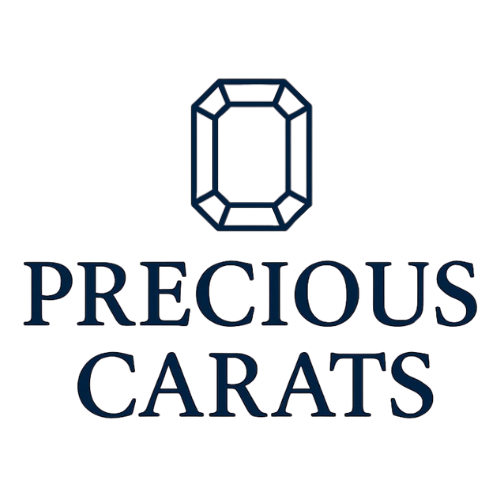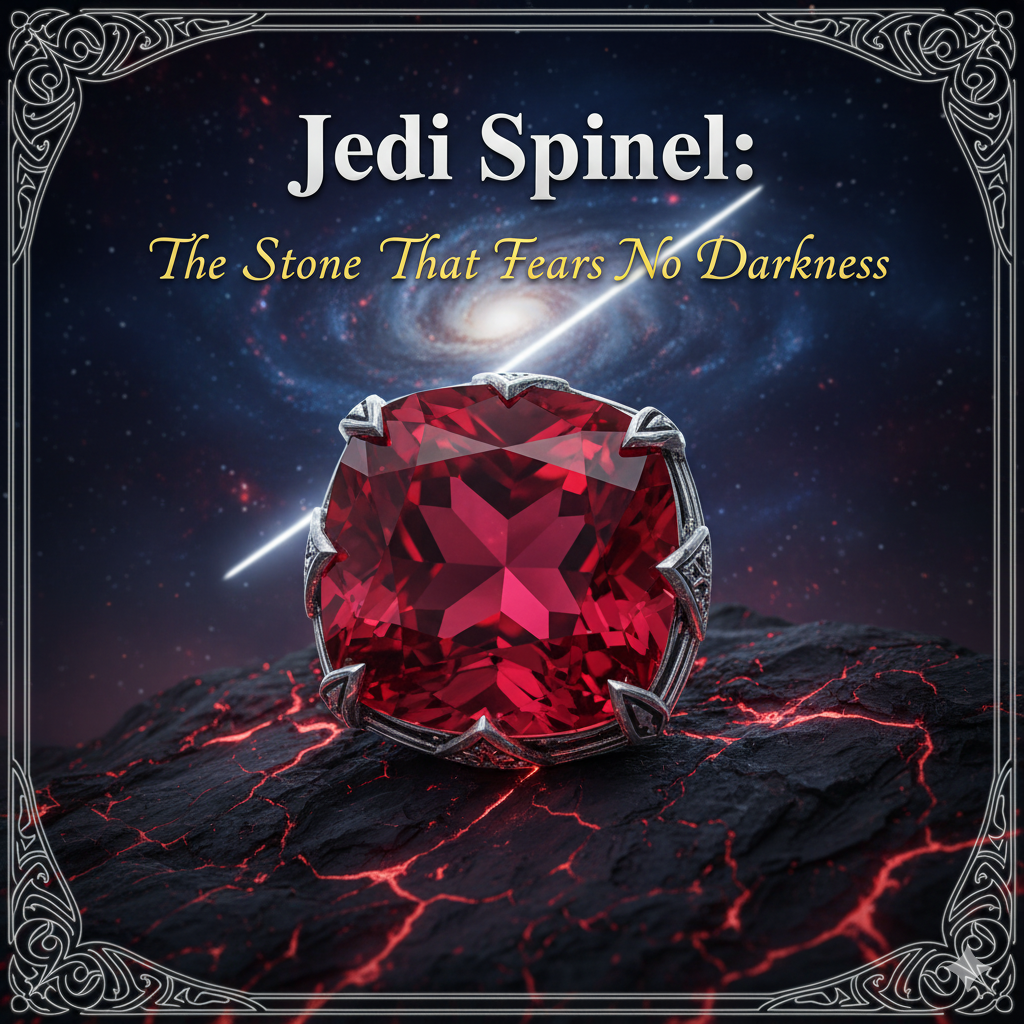Introduction
1. The Return of Colour
In a world of subdued blues and disciplined greens, one gem burns differently — it glows from within, as though its light source lies under its own skin.
This is the Jedi spinel — also known as Mansin Spinel a stone that seems to have borrowed its name not from geology but from myth.
The term was born among gem dealers in Burma (Myanmar) in the late 20th century — coined half in jest, half in awe.
When miners in Namya (Namyaung) and Mogok unearthed parcels of vivid pink-red spinel that glowed even in shadow, one dealer exclaimed:
“These stones fear no darkness — like Jedi!”
The name stayed. And so a modern legend began.
2. The Geography of Light
The heartland of Jedi spinel lies in northern Myanmar, around the historic Mogok Stone Tract and the Namya mine (discovered around 1990s).
These two regions together produce the world’s most celebrated red and pink spinels — gems that rival rubies in beauty but differ in tone, texture, and temperament.
2.1 Mogok — The Eternal Source
- Geological host: Marble and calc-silicate rocks, part of the metamorphic Mogok Belt.
- Character: Intense red-pink spinel, often slightly purplish, highly transparent, with no need for heat treatment.
- Inclusion traits: Small octahedral crystals, boehmite needles, “sugar-like” reflective grains.
2.2 Namya (Namyaung) — The Jedi Source
- Located about 150 km northwest of Mogok.
- Discovered commercially around 1990–1992.
- Produces lighter, pure neon pinkish-red spinel — softer in tone but unmatched in fluorescence.
- The material glows vividly even under low light, and electrifies under daylight or UV.
3. The Meaning of “Jedi”
Not all spinels from Mogok or Namya are “Jedi.”
The name is reserved for a very specific visual and chemical personality.
A true Jedi spinel must meet all of the following criteria:
| Parameter | Ideal Character |
|---|---|
| Hue | Pure pinkish-red to vivid red (no brown or orange modifier) |
| Tone | Medium to medium-light |
| Saturation | Very high — vivid or “neon” intensity |
| Fluorescence | Strong red under daylight and UV, giving “glow from within” effect |
| Clarity | Eye-clean to loupe-clean |
| Treatment | None (spinels are almost never heated) |
| Origin | Primarily Namya, Myanmar (occasionally Mogok material meeting the same optical criteria) |
The nickname “Jedi” refers to its resistance to darkness — literally, its ability to remain luminous even under dim light.
If a ruby carries majesty, a Jedi spinel carries energy.
4. Spinel and Ruby — Twins, Not Siblings
For centuries, spinel and ruby were mistaken for one another.
Both belong to the octahedral crystal family, both are red, and both are mined in Mogok.
In fact, some of the world’s most famous “rubies” — like the Black Prince’s Ruby in the British Imperial Crown — are actually red spinels.
But gemologically, the difference is fundamental:
| Property | Ruby (Corundum) | Spinel (MgAl₂O₄) |
|---|---|---|
| Crystal System | Trigonal | Cubic |
| Hardness (Mohs) | 9.0 | 8.0 |
| Refractive Index | 1.762–1.770 | 1.718 |
| Pleochroism | Strong | None |
| Dispersion | Low | Slightly higher |
| Treatment | Often heated | Almost never treated |
| Colour Origin | Chromium (Cr³⁺) + Iron | Chromium only |
| Visual Character | Saturated, dense | Open, vivid, neon-like |
In essence:
Ruby is the king of depth.
Spinel is the spirit of light.
5. Why Namya Changed Everything
Before the discovery of Namya, fine red spinels came mainly from Mogok, Tajikistan, and Sri Lanka.
They were beautiful, but they didn’t glow.
Then came Namya’s stones — pure, transparent, and glowing as if lit from within.
Under any light source — incandescent, daylight, or candlelight — they retained their fire.
Dealers quickly realised this new spinel was a category of its own.
Its hue danced between ruby and pink sapphire, yet its purity and fluorescence surpassed both.
6. The Jedi Effect — Fluorescence as Emotion
The secret behind the Jedi spinel’s luminosity lies in its trace-element balance:
- High chromium (Cr³⁺) gives red colour and strong red fluorescence.
- Extremely low iron (Fe²⁺) prevents colour suppression and extinction.
- Perfectly transparent host lattice allows light to bounce freely.
This combination gives the “neon glow” — a visible radiance that doesn’t depend on external reflection.
Even in shadow, a Jedi spinel appears internally lit — as if it carries daylight in its heart.
7. The Market Ascension
Once overlooked, spinel has now become one of the top five coloured gemstones in global auctions, alongside sapphire, ruby, emerald, and Paraíba tourmaline.
From the mid-2010s onward, Jedi spinels skyrocketed in value:
- 2012: Fine stones traded around $800–$1,200/ct.
- 2016: Prices touched $5,000–$8,000/ct.
- 2020–2024: Top museum-grade Jedi spinels (3–5 ct) reached $15,000–$25,000/ct.
- Large, clean 10+ ct stones with certified Namya origin now command over $40,000/ct in private sales.
Collectors from Japan, Singapore, Hong Kong, and Switzerland dominate the market — attracted by its purity, fluorescence, and immunity to treatment.
8. Laboratory Recognition
All major labs — Gübelin, SSEF, GRS, Lotus Gemology, and GIA — have formalised reference databases for Jedi-type spinel.
Common lab observations:
- Strong red fluorescence in both long and short-wave UV.
- Absence of iron absorption lines in spectroscopic analysis.
- Inclusions: negative crystals, faint fingerprint textures, no rutile silk.
- Colour notation: “Vivid Pinkish Red” or “Vivid Red” under GIA nomenclature.
Lotus Gemology in particular popularised the term “Jedi” in scientific writing, honouring the dealer slang that had already become iconic in Mogok.
9. Other Spinel Sources vs. Jedi
| Origin | Colour Range | Distinctive Features | Comparison to Jedi |
|---|---|---|---|
| Tanzania (Mahenge) | Neon pink to hot red | Strong fluorescence, clean | Close in look, but more pink and less saturated red |
| Tajikistan (Kuh-i-Lal) | Deep red | Brown modifier, darker tone | Lacks brightness, higher Fe content |
| Sri Lanka | Light pink | Pastel tones, often heatable | Too light for Jedi classification |
| Vietnam (Luc Yen) | Purplish-red | Clean, fine grain | Excellent stones, some close to Jedi type |
| Burma (Mogok) | Pure red | Less neon, more classic | Some Mogok stones meet Jedi quality but rarer |
Thus, while Mahenge spinel sometimes earns the “African Jedi” nickname, true Jedi status belongs to Namya, Myanmar — where low Fe and perfect Cr concentration create unmatched neon fire.
10. Why Collectors Revere It
Collectors describe Jedi spinel as “alive.”
Even small stones seem to hum with light.
Its visual effect resembles the Paraíba tourmaline — but in red.
Three key reasons drive its cult following:
- Untreated Beauty: No heat, no diffusion, no enhancement — 100% natural brilliance.
- Finite Source: Namya’s productive layers have nearly vanished; most stones today are from old stock or recycled pieces.
- Emotional Radiance: The gem’s hue feels joyful — neither aggressive nor subdued. It projects hope.
In a world tired of treated, corrected, and optimised stones, the Jedi spinel represents something profoundly rare: light without intervention.
11. Mogok vs. Namya — Two Faces of Burma’s Soul
| Feature | Mogok | Namya |
|---|---|---|
| Geological Host | Marble + skarn | Dolomitic marble |
| Colour | Deep rich red | Pure neon pink-red |
| Fluorescence | Moderate | Very strong |
| Iron Content | Slightly higher | Extremely low |
| Market Perception | Classic, regal | Modern, electric |
| Symbolism | Tradition | Youth and energy |
If Mogok rubies are the sound of a temple bell, Namya spinels are a flash of lightning across the same sky.
Both belong to the same country, but they speak to different hearts.
12. Ethical Mining and Access
Myanmar’s political complexities have challenged responsible gem sourcing.
While spinel mining remains mostly small-scale and artisanal, recent years have seen improvements in traceability, especially in Mogok where licensed cooperatives now work under partial government oversight.
Namya production has dwindled — many pits flooded or collapsed. New exploration is sporadic.
Most Jedi spinels entering the market today are older goods recut for modern buyers, often certified in Bangkok, Singapore, or Geneva.
13. Auction Highlights
- Christie’s Geneva, 2019: 12.28 ct vivid pinkish-red spinel, Namya origin — USD 1.52 million.
- Sotheby’s Hong Kong, 2022: 7.89 ct vivid red spinel, Mogok origin, Jedi type — USD 830,000.
- Bonhams London, 2023: 5.12 ct neon pink-red spinel — USD 420,000.
Top stones consistently outperformed even fine rubies of equivalent size, largely due to unheated status and colour uniqueness.
14. The Future of the Jedi
The Namya deposit is nearly silent now.
Local miners say the glow still flickers underground, but large finds are exceedingly rare.
As supply tightens, collectors are turning to Mahenge and Luc Yen for visual substitutes — but the geological signature of Jedi spinel remains unmatched.
Its legacy will likely mirror that of Kashmir sapphire:
a finite chapter of natural perfection, closed by time, immortalised by colour.
15. PreciousCarats Reflection — The Flame that Never Fades
Some gemstones shine because of rarity. Others because of memory.
The Jedi spinel shines because of both.
It is the antidote to darkness — a reminder that beauty can be fearless, pure, and spontaneous.
Unlike the composed poise of sapphire or the solemnity of ruby, the Jedi spinel speaks with laughter in its light.
If gemstones were music, the Jedi spinel would be a sudden burst of violin under the sun — impossible to ignore, impossible to repeat.
At PreciousCarats, we regard it as the modern masterstone — proof that even in the 21st century, the Earth still surprises us with miracles of light.

